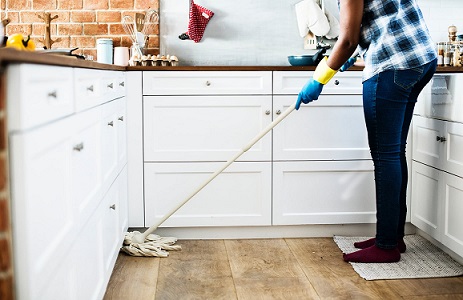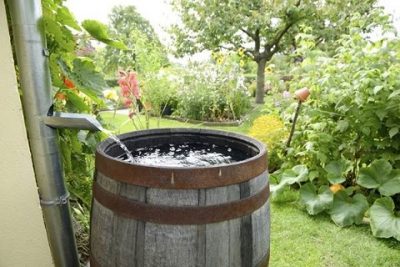The 10 Steps to an Eco-Friendly Abode
Would you like to adopt a more economical, environment-friendly and eco-friendly lifestyle and you don’t know where to begin? How about starting with some changes in terms of how your house works? Many functions of your home can be damaging to the environment or can consume more resources than they actually need for proper usage. This is the moment to make some changes and better your house. It all starts with your motivation, which is supposed to be directed to becoming responsible regarding the protection of the environment. This article will list various ways that could make this change happen.
Here is a list with 10 eco-friendly steps you can adopt as soon as possible:
Small changes
1. Natural cleaning products

If you don’t want to spend a fortune on bio cleaning products, try to make your own. Natural cleaning products are making a great difference when used instead of toxic products. This is one of the first small steps you can take to transform your home into an eco-friendly one. There are a lot of DIY recipes for natural green cleaning products where you get inspired from and you might be amazed at how efficient they are. If you can afford it, go ahead and buy bio cleaning products that don’t contain any kind of toxic elements.
2. Composting
In case you never heard of composting before and you’d like to try it, it’s a great way to recycle organic waste around your garden. Combine the leaves, grass, paper or crop residue from your garden to obtain quality fertilizer that you can later use to grow natural veggies. Learn the do and don’t of composting. Microorganisms will transform the organic waste into substances.
3. Recycling

Every household can recycle items both through outside programs but at home as well. Outside programs help with recycling plastic bottles, bottle caps, milk jugs and every other small item that you may use daily inside your house. Another item that’s frequently used and present in one’s house is represented by plastic bags. Reusing and recycling them when they get damaged or opting for recyclable bags is the option you should choose. The same goes for newspapers or shrink wraps. Anything that’s recyclable should be thoroughly rinsed before sending it to a recycling center. Food waste should be removed from the surface of the recyclable items.

4. Smart meters
Installing smart meters in your home will surely make a difference. Smart meters can tell you when you should make a change in the way you live. For instance, you can start by installing a meter which tells you how much energy or how much water you consume weekly or monthly. This will work as a triggering signal to reduce the quantity of energy or water that you require within a specific period of time. There are smart meters for all sorts of purposes, so go ahead and install one for your home.
5. Reduce food waste
It is known that people produce a lot of food waste because they buy it in larger quantities than needed. The goal is to reduce the food waste your household produces by always buying the appropriate amount of foods and consuming them completely. Any food waste that is produced should be composted instead of thrown away. Another good idea would be to consume foods that are home-made.
Smart remodeling
1. Changing windows and doors
The first major change to consider refers to replacing the windows and doors of your house. Low quality or damaged windows and doors lead to higher energy bills, which is exactly the outcome you want to avoid. Windows and doors that insulate the house properly and keep it cool during the summer and heated during winter, balancing the heating and cooling system are the ones you should seek.

2. Transform your house into an energy-efficient one
An energy-efficient house refers to a building that uses quality materials and fixtures to reduce the costs at the end of the month related to energy or water. These fixtures often involve choosing FSC-certified furniture, LEDs instead of regular CFL light bulbs, economic showerheads and so on. Using LEDs means that you will need fewer light bulbs, as they produce a better light distribution. Also, LEDs do not contain any type of toxic elements, such as mercury, which makes them eco-friendly. You will reduce the costs involved in fixtures because the lifespan of LED lights is longer.
3. Seal your attic
Talking about insulation and keeping the air cool or heated, sealing your house’s attic could really make a difference in the long run. Yes, this change might be a little expensive at once, but gaps and cracks in your attic’s insulation will lead to higher bills that accumulate during winter or summer, and you’ll spend just as much. Get the attic insulated to minimize the energy consumption and the costs. It would be recommended to insulate the rest of the house as well if you can afford it.
4. Reuse water

Do you own a pool? How about reusing the water instead of changing it too often? Buying a pool cover saves energy over the winter and you won’t have to pay huge amounts of money for this purpose only. The same goes with other large quantities of water that could be repurposed. For instance, whenever you take a long bath and the tub is filled with water, you can reuse it to flush the toilet. Invest in a rain barrel and use the respective water to irrigate your garden. There are plenty of ways to reuse the water you consume. Take them into account and the bills will be dramatically reduced.
5. Ventilation systems
Invest in good ventilation systems to harness the energy that already exists in a home instead of producing new energy that consumes resources you’d like to save. Install bathroom ventilation fans to reuse the heated air for the rest of the rooms. Ventilation systems also help with maintaining heat constant in the whole house without additional services. Combined with insulation, installing a good ventilation system will do the job.
Would love to hear your tips or ideas on to have an eco-friendly lifestyle – please share in the comment section!
Please share this article so that we can all learn together on how to have a healthier home, life, and planet!!!

Because I live off the grid and far from town I compost kitchen and garden plant based waste. I don’t have a place for a compost barrel, so I practice chop and drop methods. The plant waste provides mulch as it decays to become future nutrients in my soil. I learned this method at a recent garden club class and it has really transformed my gardening. – Margy
HI Margy,
That sounds very interesting and I appreciate you sharing your chop and drop method -I’LL have to check that out. Thanks for stopping by and commenting. Have a healthy, happy & blessed day!
I’ve been working towards an more eco-friendly, less waste home and this is a really great article with really great ideas. I’m “bookmarking it” now and will return to it as I mark things off the list!
Hi,
I am so glad to that you found my ideas helpful. Thanks for stopping by and commenting. Have a healthy, happy & blessed day!